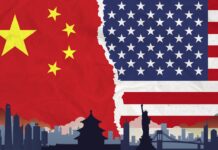In a move that ended months of market speculation, the US Federal Reserve’s Federal Open Market Committee (FOMC) has broken its 14-month policy pause with a significant 50 basis point cut to the federal funds rate. This decision, lowering the rate to a range between 4.75 and 5.00 percent, marks the first cut since the pandemic-era emergency measures of 2020.
Although cheered by a majority of stakeholders, this change in monetary policy also indicates the start of an uneasy juggling act for the central bank. The Fed is also walking a fine line between managing market expectations and not overtly committing to a more dovish cycle of rate cuts. Interestingly, Fed Chair Jerome Powell is suggesting caution against interpreting this rate cut as the start of a broader trend. He has stressed a “meeting-by-meeting” strategy, pointing towards the uncertainty around whether future rate moves would go up or down. While Powell’s message was clear that the Fed is still confident in the strength of the U.S. economy but still it will tread carefully. The cautious tone is signaling that, while additional rate cuts could be expected, the Fed is in no mood to fuel market exuberance.
The decision to cut rates by 50 basis points, while significant, it did not come without internal debate and pushback. For example, FOMC member Michelle Bowman suggested a more modest 25 bps cut. Her dissent highlights a key message from the larger Fed thinking: despite this market speculation, an aggressive monetary shift isn’t imminent. Fed chairman Jerome Powell’s comments that the neutral rate might be higher than previously thought show how careful the Fe plans to be in the coming days. Do not be left in any doubt that, despite the easing, inflationary pressures are very much on the central bank radar.
The 50 bps rate cut has been greeted with optimism and caution. On the one hand, it has bolstered U.S. markets and investor confidence. Still, experts caution against the potential consequences of such dramatic easing. Factually speaking, the decision from the Federal Reserve to cut rates by 50 basis points was motivated by two factors – primarily to provide support to a faltering labor market, and secondly, to keep inflation in check. The half-point cut puts the federal funds rate at a range of 4.75% to 5%, a reduction intended to promote economic activity by making borrowing less expensive for average consumers and businesses.
One of the primary motivations behind the Fed’s rate cut was to protect the job market. Despite low layoffs, job opportunities have dwindled, leading to a gradual increase in unemployment. The Fed action reflects increasing anxiety about the labour market, as officials seek to stave off even greater unemployment. Reducing interest rates can encourage businesses to invest and grow, which leads to the creation of jobs in an economy. However, the effectiveness of this strategy depends on various factors, including business confidence and consumer demand.
Even with the rate cut, it is questionable if businesses will start hiring en masse in an economic environment clouded by uncertainty about future demand. The Fed’s decision also reflects concerns about rising unemployment. The unemployment rate has moved up – 4.2% compared to 3.8% for the same period last year. The Fed is looking for ways to reduce rates so that unemployment does not increase further, as this can have more serious economic complications. Reduced consumer spending, lower economic growth, and higher financial stresses on households can collectively be the consequence when unemployment rises.
The problem with lower rates is that while they can encourage the creation of jobs, they also may give rise to inflationary pressures if the economy overheats. A key dilemma facing the Fed is balancing its dual mandate of championing full employment and price stability. A second major problem that has been holding back the US economy is the lack of skilled workers. Despite the overall weakening of the labor market, certain sectors will continue to experience a significant gap between the demand for and supply of skilled workers. Such a shortfall can be an obstacle to economic growth and productivity.
The Fed’s rate cut could indirectly address this issue by encouraging investment in education and training programs. Lower borrowing costs can make it easier for individuals to finance their education, potentially increasing the supply of skilled labor over time. By having cheaper credit available, businesses may also be more inclined to provide educational opportunities for their workers.
Furthermore, there is another worry that the price impact of low rates would inflate asset bubbles as investors chase yield in riskier assets. This could lead to a financial instability in the case that the prices of assets are decoupled from their fundamentals. Although the Fed has gained confidence that inflation is moving sustainably toward its 2% target. There is always a risk that lower rates could lead to higher inflation if demand outstrips supply. The Fed will need to closely monitor economic indicators and be prepared to adjust its policy if inflationary pressures emerge.
The Fed’s ability to balance its dual mandate of promoting maximum employment and maintaining price stability will be crucial. The rate cut is a significant step, but it is only one part of a broader strategy needed to ensure sustainable economic growth.





















